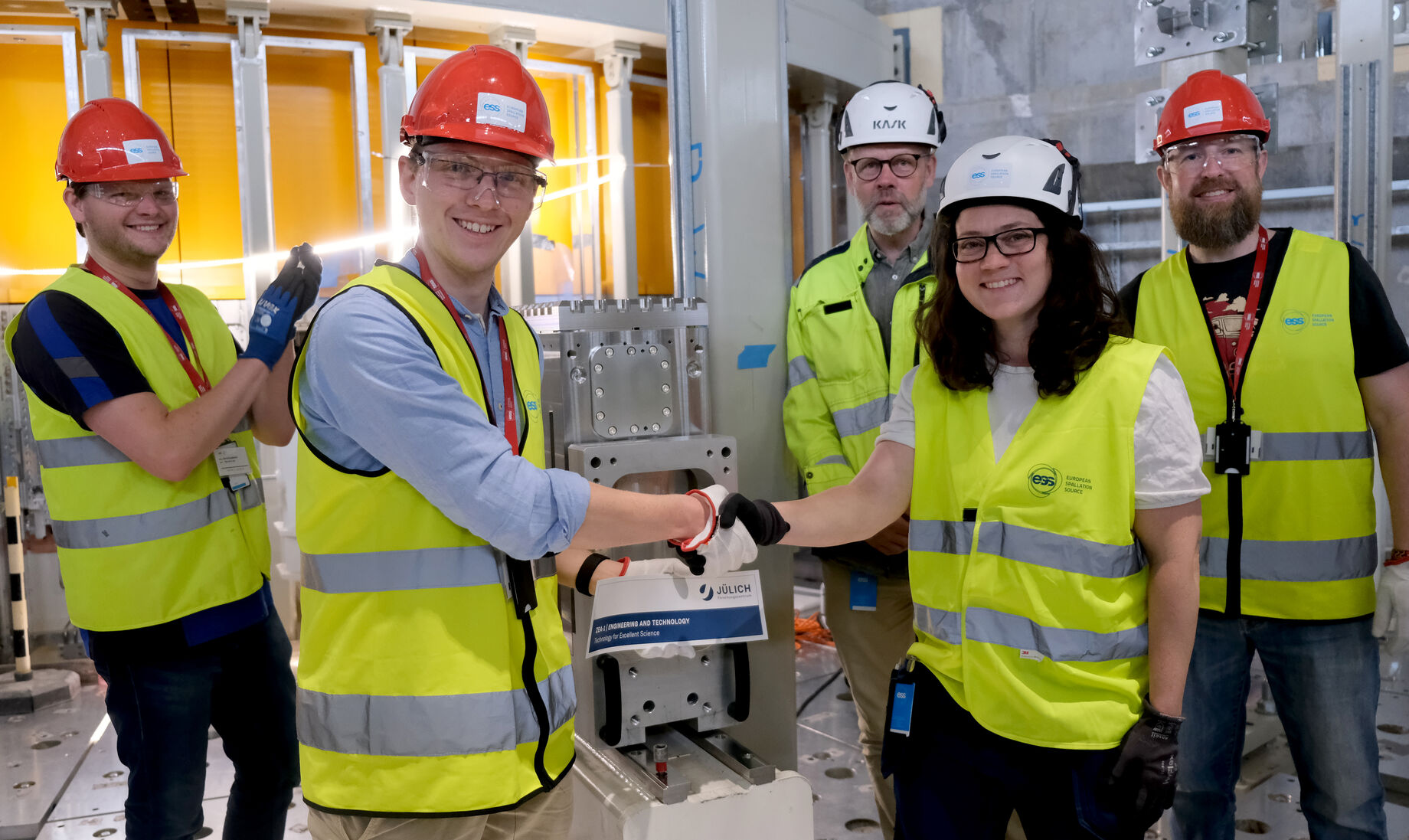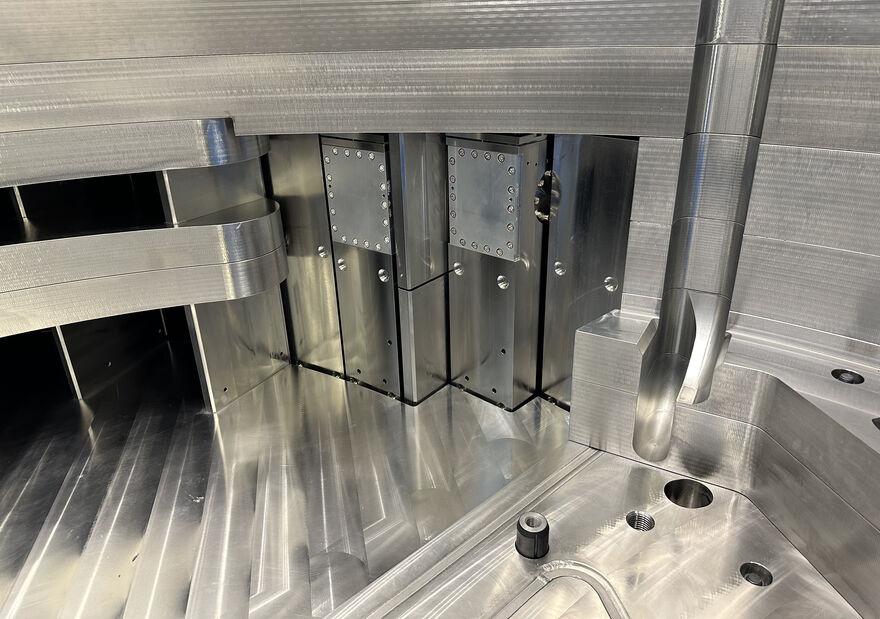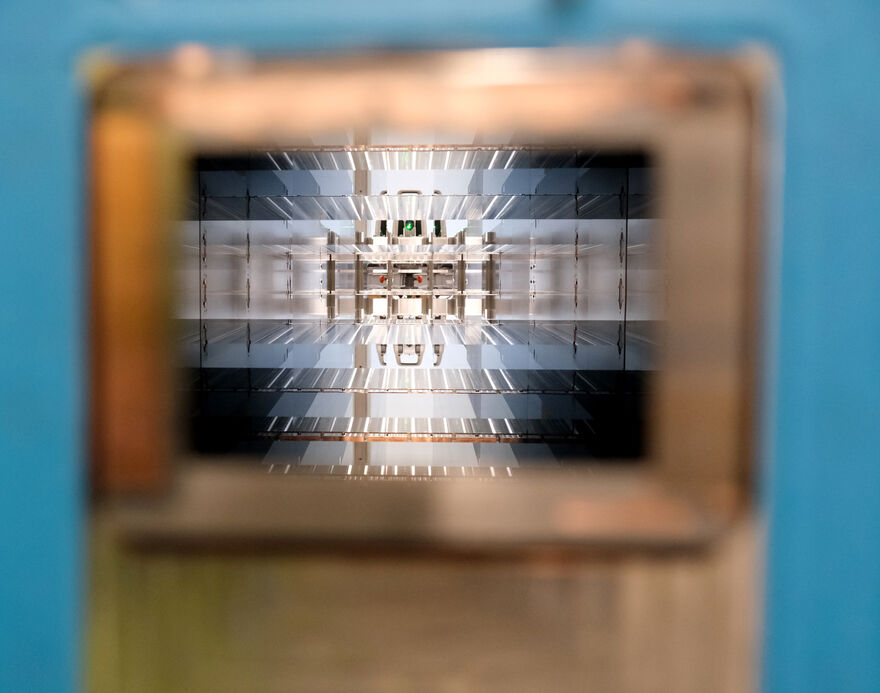
The ESS Target Installation team has placed the very last Neutron Beam Port Insert in the 42nd port plug, and sealed it with a neutron beam window. This concludes years of preparation and work to design, manufacture, prepare and install these massive steel chunks, a project carried out in collaboration with German in-kind partner FZJ Jülich.
A total of 16 inserts and 26 plugs now occupy the port tubes surrounding the Target Monolith. The installation started with the first plug in March this year, with the last insert rolled in place on the 4th of July 2023.
The 16 inserts were prepared in an onsite optics assembly cleanroom, where integration of neutron optics took place. Each neutron beam port insert looks the same on the outside but inside they each contain customized instrument-specific copper optics within. The inserts and plugs serve as the interface connecting the ESS target systems to the neutron instruments.
The neutron beam port inserts and plugs were rolled into the port plugs using kinematic mounts, ensuring precise positioning. Once fully inserted, the ESS Survey, Alignment and Metrology (SAM) team meticulously measured each component’s exact position. To create a seal between the Monolith atmosphere and the instrument beamlines, a neutron beam window was fitted. Subsequently, rigorous vacuum tests of the cooling channels were conducted to ensure that each insert was leak-tight inside the Monolith.
With the successful sealing of all 42 neutron beam windows, the next critical step involves conducting vacuum tests on the entire Monolith confinement. This comprehensive testing process encompasses the vessel and its contents, the proton beam drift room pipe connecting to the Accelerator tunnel, and extends all the way to each neutron beam window. These tests will be carried out during the summer.
Looking ahead, the installation of the Light Shutter System and the remaining Neutron Beam Extraction System will follow suit. Additionally, cooling and electrical installations in the bunker area are scheduled, and subsequently, the neutron guides will be installed and connected to the instruments.


























